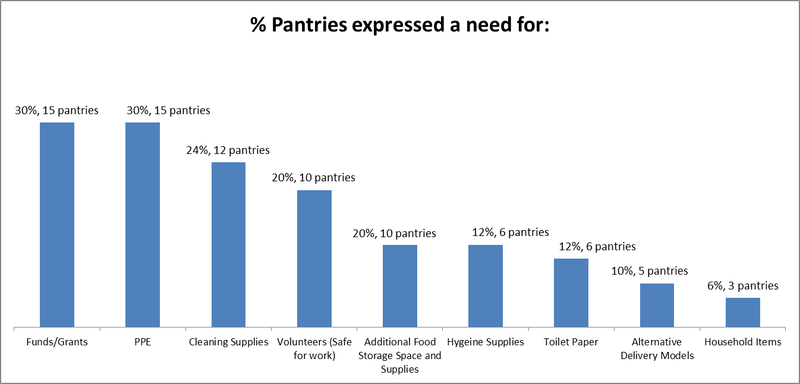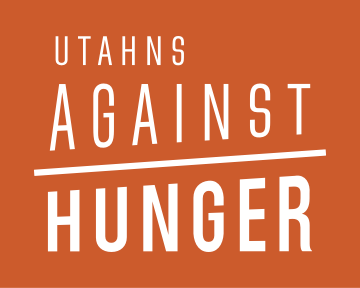Survey Structure
Utahns Against Hunger was able to survey 77 of 120 organizations (65%) across the state of Utah. These 79 organizations represent 95 emergency food providers. It should be noted that there were some larger organizations that did not respond to the survey so their needs and increased demand is not reflected in these results. It should also be noted that 44 of the 79 organizations surveyed are located along the Wasatch Front and Washington County, and 33 organizations are located in other rural parts of the state. Questions covered topics on immediate needs, both food and non-food related, hour and location changes, the increased number of clients being served, client waiting periods, organizational and community outreach strategies, and practices for food pick-up and delivery.
Prior to the pandemic, food delivery services were not widely provided by Utah food pantries—that has changed in a matter of weeks. While food safety has always been practiced, the level of scrutiny to ensure client safety has dramatically increased. This alone would be difficult, but factoring in the economic impact of the pandemic, there is concern about the capacity of Utah emergency food system to continue to meet the food needs in their community.
Survey Results
Food Distribution Model: The survey found that the pantries are complying with CDC and UDOH recommendations regarding limiting person-to-person contact, the use of personal protective equipment, and social distancing. Practices include enforcing social distancing for in-person pick-ups, volunteer/staff-assisted drive-thru food pick-ups, and no-contact deliveries. Pantries are also ensuring that donated foods are prepared and packaged in a manner to mitigate the potential transmission of any disease.
Client Experience: While many pantries are experiencing an increase in a demand on their services, few reported longer waiting periods. However, some pantries expressed concern about staff “burnout” and clients being frustrated by the disruption service.
Food Pantry Hours/Capacity/Needs: During the survey process, we identified at least 9 food pantries (most are in Salt Lake County) that closed. Eight were directly related to the quarantine and COVID-19, either because of school closures, a lack of volunteers, staff capacity or out of caution for pantry client’s wellbeing. 29 percent (22 organizations) of all pantries who responded to the survey said they have recently reduced hours of service or capacity to serve their community. Reductions in hours/service are a result of reductions in staff and volunteer capacity. When asked, 34 percent (26 organizations) of respondents reported a need for additional volunteers. While pantries reported the need for volunteers, it is also complicated by the need to keep both volunteers and clients safe. Several pantries are currently not accepting volunteers and instead relying on existing staff. When asked the following: “What other operation needs (both short and long-term) do you have or will have to response to the COVID-19 quarantine?” 59 percent (46 organizations) of pantries expressed a non-food need. The question was open-ended and many reported multiple needs.
Responses were categorized as follows:
What other operation needs (both short and long-term) do you have or will have to response to the COVID-19 quarantine?

The survey results show a critical need beyond food assistance. Several organizations expressed a need for funding to cover costs (e.g. staff, rent, storage, equipment and utilities), as well as a need for cleaning supplies, personal protective equipment and hygiene supplies.
Food Pantry Food Needs: 31 percent (24 organizations) of pantries expressed a need for food donations. Pantries in need of additional food expressed a need for fresh produce, dairy products and protein.
Summary: This survey represent a snapshot of the impact of COVID 19 on emergency food services, and while valuable, Utahns Against Hunger understands that more comprehensive information is needed to fully understand the scope and impact of the adequacy of the response. UAH learned that pantries have responded quickly to the community need, but there are gaps in resources, capacity, and infrastructure. The needs of food pantries in Utah are specific to the individual pantries. While caseloads have increased, most pantries reported that they are currently meeting the needs of their clients. However, ongoing increased demand threatens long-term sustainability. Many pantries have seen decreases in staff, volunteers, hours of operation and capacity to serve, and at least 8 pantries closed due to the quarantine or concerns about COVID 19. Nearly a quarter of pantries surveyed reported a need for food, especially fresh produce, dairy products and meat. This is likely the result of last month’s run on groceries and subsequent supply shortage in the grocery rescue program. The Utah Food Bank and local pantries depend on perishable products to supplement donated and purchased food. While grocery rescue is a valued program, it demonstrates the need for additional resources that pantries need to purchase perishable foods, instead of relying on donations from local grocery stores. These stresses show the need pantries have for additional funding to cover operational financial costs (staff pay, rent, utilities, food and other purchases), funding to provide additional types of assistance for SNAP/WIC enrollment, rental assistance and other needs. The need for additional resources also extends to personal protective equipment and cleaning supplies to ensure that all people involved are kept safe during food distribution.
